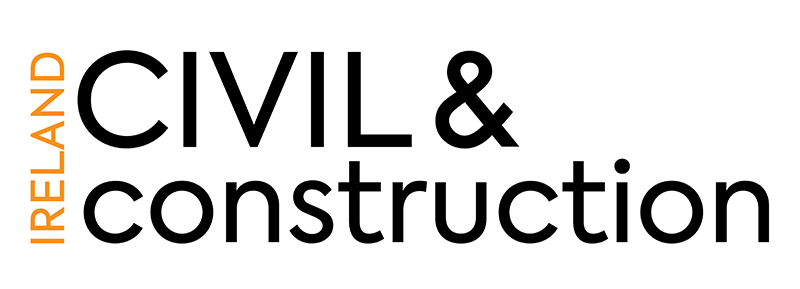
On the 3rd July 2023 Ministers Donohoe and Smyth announced a package of contract reforms for public works in Ireland, to build confidence in 2040 National Development Plan delivery. Included in the package were further details about the role of BIM (Building Information Modelling) and sustainability, with a timeline for Public Sector BIM Adoption starting in January 2024.
In particular, two of the measures announced have the potential to transform the design, construction and operation of public works projects over the coming years, and reflect the European Commission’s aspiration for a streamlined “digital” marketplace, and “green” or sustainable construction. These measures are the adoption of the ICMS (International Cost Measurement Standard) to enable consistent reporting of costs, life cycle costs and analysis, including embodied carbon across the National Development Plan, and the “digital data” capacity of BIM, to drive significant productivity improvements from the point of view of time, cost, safety and better-quality outcomes.
Over the coming 4-year period, the BIM adoption strategy will utilise the significant buying power of the “public sector” (which represents at least 25% of construction activity), to incorporate digital delivery requirements as part of the overall Government strategy to digitalise the construction sector by 2030.
Global Trends
Digital construction is no longer a figment of our imagination but an emerging reality, as global trends push us towards a more ‘digitally’ connected, efficient, safer and sustainable built environment. The European Commission’s digitization and sustainability drive, the World Economic Forum’s digital transition and ‘green agenda’ roadmap, and numerous industry reports over the years, have all underscore the urgency of embracing digital technologies in the AEC sector (Architecture, Engineering, Construction, Real-Estate or Infrastructure Asset Management). One of the key pillars of this transformation is the management of all the digital information about buildings and infrastructure, encapsulated in the practice of BIM Coordination, or Information Management to ISO19650 series of international standards.
The Realization of Digital Construction
The first “realisation” for anyone working in the industry, is that this “digital transformation” is here, whether you like it or not, and you will either be ready, or you will be left behind. To secure your future career, or business, you should be fully aware and prepared. The commitment from the European Commission, and it’s pending updates in regulations, coupled with the Irish governments own BIM strategy, signal that we are well and truly in the age of digital transformation. The second “realisation” is of course, that the “digital transformation” is not going to happen simply by accident, or even because the EU or Irish government say it will – it will only happen because of the “people” involved in the production, management, and exchange of “digital data” in our sector. This includes “everyone” who produces, or uses “information”, in the planning, design, construction and operations of buildings or infrastructure. Nobody is “exempt” from the digital disruption. In particular, one role in the AEC sector is becoming increasingly indispensable – the BIM Coordinator or Information Manager.
BIM and The Digitization Trend
BIM is both a process and an output, referring to the creation and management of a “digital representation of the physical environment.” This ‘building information model’ comprises various types of digital information, from geometric data to non-graphical data and all the relevant documentation, stored in a shared database known as the “Common Data Environment” or CDE.
The management of this information is no small feat – it requires coordinating the efforts of multiple parties across the lifecycle of assets, and across the fragmented supply chain, who contribute information related to both capital projects and ongoing asset management. Hence, the growing demand for BIM Coordinators, or Information Managers, who can manage and streamline this process.
An important aspect here, is the “timing” of the creation of the “digital representation”, which should be completed BEFORE the execution of “physical construction”. The enormous opportunities for cost control, planning, quality, productivity, safety and sustainability, come from “building it twice” – once in software, where analysis can take place and mistakes corrected, BEFORE trying to execute the work on site with real materials, and real labour. The MOST expensive, disruptive and dangerous place to make any corrections or changes, is on site. The cheapest, quickest, and safest place to identify any problems, and make corrections, is in the “digital model” beforehand. This sounds obvious, however, many traditional forms of contract are written and awarded on the basis of “late” decisions and input or production of information from specialist contractors, that result in significant changes on site, and associated cost, disruption, and safety risks.
The Facets of BIM Coordination: Process’ Technical and People Management
There is a misconception, or misunderstanding in industry, that BIM coordination is simply a technical skill of 3D ‘clash detection’. That is a very limited view or definition of BIM coordination. While it does include some technical skills, it is more about process and people management – synchronizing the activities and information contributions of various stakeholders, facilitating collaboration, and ensuring everyone works coherently towards a common goal (to deliver the information model). Of course, the BIM Coordinator’s role does involve mastering a range of software and tools (as it is ‘digital’ process after all), but more critically, the BIM Coordinators serve as the essential ‘linchpin’ that keeps the project information flowing smoothly, making sure accurate, complete, resolved, coordinated information is provided at the right time, and is available to those who need it, reducing errors, enhancing productivity, improving safety, performance and outcomes.
Skills and Competencies Required for a BIM Coordinator
A BIM Coordinator should have a firm grasp of the information management process set out in ISO19650 series of standards. This is your “instruction manual” on how to do your job. As well as the technical aspects related to operating the Common Data Environments (CDE’s), BIM software tools, BIM Coordinators must understand the complexities of collaboration between stakeholders in the AEC industry (People, Process, Technology). They should have strong people and project management skills, with the ability to coordinate multiple stakeholders and manage resources effectively. Communication skills are vital – BIM Coordinators must be adept at translating complex information requirements into understandable terms for various team members to deliver. Furthermore, they should exhibit strong problem-solving abilities, a strategic mindset, and crucially, the resilience and agility to adapt to the fast-evolving landscape of digital construction. These are the “super-powers” of a good BIM Coordinator or Information Manager.
Community Driven Innovation
There is no reason for anyone to have to “venture” into this vast world of the ‘digital transformation’ by themselves – that would be the least productive way to learn, acquire knowledge, wisdom or skills. The most productive way is to learn from those who have gone before, and who are willing to share their knowledge and wisdom. It is in the collective best-interest of the AEC sector, both buyers and suppliers, to become digitally proficient, and deliver on the objectives to be more productive, safer and more sustainable. To achieve that at “scale” requires an open and transparent sharing of knowledge beyond individuals or single organisations. The ‘BIM Heroes’ Community has been established for that very reason, to equip and educate ‘leaders’ to enable this ‘digital transformation’ of AEC. With over 5,000+ community members from over 100+ countries, willing to engage, network, share information and knowledge, to propel significant change at scale. This is a community driven by a vision to become an impactful, self-managing, self-sustaining, open, transparent, decentralised autonomous organisation (DAO), utilising the vert latest in technology and process, to nurture and enhance the “whole human” capability. Join the adventure here: https://www.BIMhero.io
Conclusion
As we venture further into the ‘digital construction’ age, the BIM Coordinator or Information Manager role in the AEC industry is becoming increasingly critical, and any career, or business, involved in planning, design, construction or operations of buildings or infrastructure assets, which has not recognised this, is in serious danger of becoming displaced. In this era of Smart Cities and Digital Economies, the ability to efficiently manage building information can significantly enhance the productivity, safety, sustainability, and resilience of our built environment. Embracing this digital trend not only secures our careers and businesses for the future, but also equips us to contribute in a meaningful to provide the critical infrastructure that supports life for all of humanity. As we embrace and navigate this path towards a digitally enabled AEC sector, BIM Coordinators, or Information Managers, will undoubtedly be at the forefront of this transformation.
